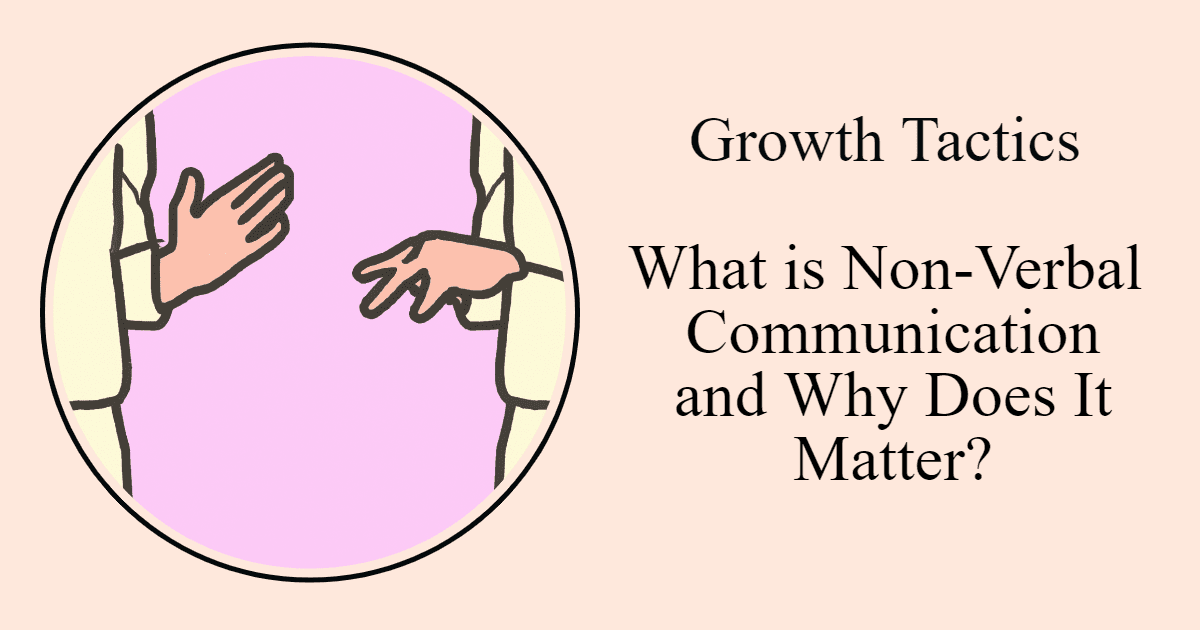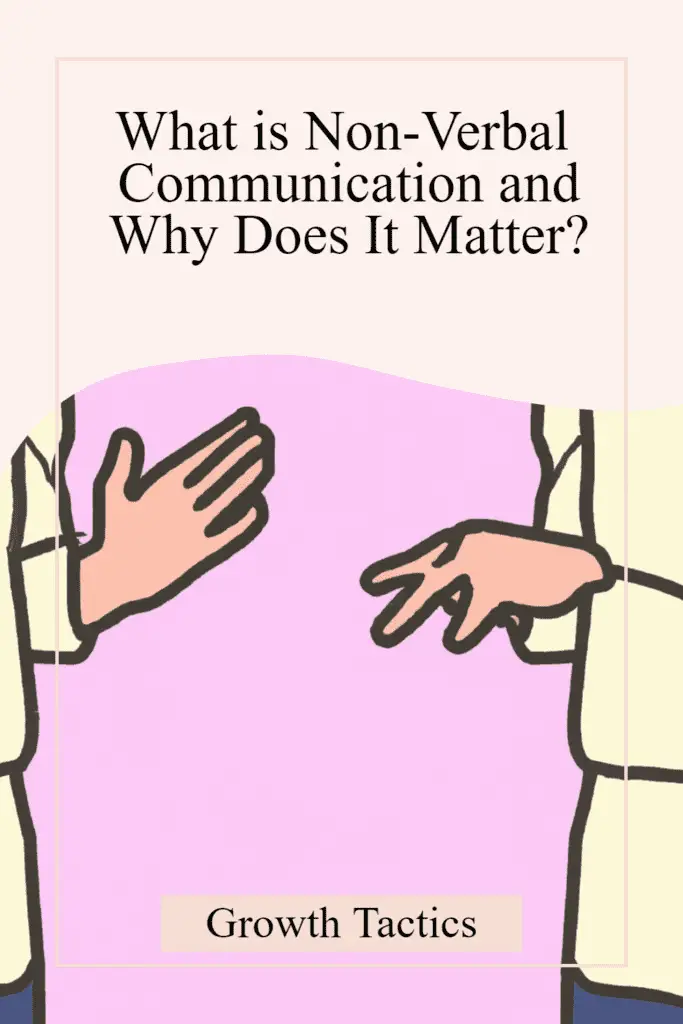When you’re trying to communicate with someone, it’s not just what you say that matters. In fact, non-verbal communication is almost as important as the words themselves. And since we all communicate differently, understanding how your non-verbal communication impacts others can be helpful in conveying the right message at the right time.
So what is non-verbal communication?
Non-verbal communication is often an unconscious behavior but it’s still super important.

Let’s start by defining non-verbal communication. Non-verbal communication is a form of communication that uses body language, gestures, eye contact, and other forms of behavior to convey a message.
It’s important to note that non-verbal communication often occurs outside of our conscious awareness – this means that we may be able to pick up on more than we realize when it comes to reading people’s non-verbal cues.
In fact, research shows that 93% of all human interactions are based on body language alone! Although this sounds like an overwhelming amount at first glance, it actually makes sense when you think about how much information is communicated in those short bursts of time between words when you first meet someone new or shake hands for the first time with someone.
Eye contact and tone of voice are two examples of non-verbal communication.

Eye contact is a powerful non-verbal cue. It can be used to assert yourself, show interest in another person, demonstrate your listening skills, and more.
In fact, eye contact is so important that it’s one of the first things you notice about someone. If someone isn’t making eye contact with you, they seem disinterested and could even be lying to you!
This is because eye contact is often used as an indicator of understanding or interest between two people. When two people are talking closely together and looking at each other directly while speaking but then the person who was speaking ends up looking away from their partner (and thus breaking eye contact) this tends to indicate that something has changed about the nature or direction of their conversation.
This is also true when someone is talking to you, but they break eye contact. This can be a sign that the person isn’t interested in what you’re saying or doesn’t believe it.
You can use your non-verbal communication to assert yourself.
You can use your non-verbal communication to assert yourself.
- Eye contact: It’s important to make eye contact with others while you speak. It shows that you are engaged in the conversation and what is being said. Avoiding eye contact could make others feel as though they’re not being listened to or acknowledged, especially if they’re speaking about something important.
- Tone of voice: Keep your tone level and neutral when communicating, even when you’re upset or frustrated by something that has happened. A calm tone helps keep the situation from escalating further and also conveys respect for those around you—or at least makes them think that you respect them!
- Posture: Good posture reflects confidence, which is essential for any healthy relationship or work environment. It also portrays a sense of self-respect on behalf of the person who holds it well! Poor posture, on the other hand…well…you get what we mean here!
- Use your hands: A lot of the way we communicate is through our hands. They help us express what we’re feeling, whether it’s anger or love, and they can also be a great asset when we need to emphasize something that we’re saying.
Your body language can have a huge impact on how you communicate and how people respond to you.

Non-verbal communication is a form of communication that you use without words. Your body language, tone, voice, and other things all send different messages to the person you’re talking with.
From where you sit in a room to how you hold your hands and arms, your body language can have a huge impact on how you communicate and how people respond to you.
Simple adjustments in your body language can lead to big changes in people’s responses to you. The next time you’re in a conversation, try to pay attention to the way you hold your body and how it affects others.
Notice if you feel more relaxed when your arms are folded or if someone else’s crossed arms make you feel defensive. Try sitting in different positions while talking with someone and see what happens. Your posture can have a significant effect on how people perceive your message and intent.
Non-verbal communication is definitely worth working on.
If you want to improve your non-verbal communication, it is important to be aware of how much your non-verbal communication is influencing your interactions with others.
You must be able to control the way that you communicate so that you can accurately convey what you mean.
You can do a lot of different things to learn more about non-verbal communication. Look up the topic online, read books on it, and even take a class on the subject. Once you have taken these steps to educate yourself about non-verbal communication, it is important that you put what you have learned into practice.
Try to pay attention to how others are communicating with you and see if there are any parts of their message that need improvement. If so, try hard to improve those areas in your own body language so that people will understand what it is that you want them to know.
Is nonverbal communication universal?
While it is true that people from different cultures may have different interpretations of these signals, many aspects of nonverbal communication are universal. Facial expressions such as smiling or frowning are understood around the world, as are certain gestures like nodding your head to indicate agreement or shaking your head to indicate disagreement.
Body language also has universal meanings. For example, crossing your arms can signify disagreement or defensiveness in almost any part of the world. Nonverbal communication is an important part of everyday life and understanding that many aspects are universal can help us better understand each other on a global level.
All interactions have some element of non-verbal communication.
Non-verbal communication is a big part of all interactions. Body language can tell others how you feel about them and what you think about the situation. It can also help to send messages that are not said out loud. For example, if someone is trying to convey something important, they may do so by using hand gestures or facial expressions.
Conclusion
Non-verbal communication is a great way to help you get your point across, but it’s not the only way. You can also use verbal communication to make sure that people understand what you mean, or even read body language (like how someone shakes their head) as a way of telling them no. Even if they don’t consciously register this information, they may still pick up on some signals without realizing it!
Did you find this article on non-verbal communication useful? Please share and subscribe below.


